
The Modern Butlers’ Journal
December 2016
International Institute of Modern Butlers
Teaching Right Mindset, People Skills, & Superior-service Expertise
Message from the Chairman
Three points to round out the year:
First, let’s get the admonition out of the way: I long ago appreciated George Bernard Shaw’s pearl of wisdom when he stated that “Imitation is not just the sincerest form of flattery—it’s the sincerest form of learning”—but only when the flatterer gets it right. I don’t mind that they lack originality; I don’t mind that they do not acknowledge where their idea came from: but I do mind when they relay the idea with sufficient alteration that they, as an apparent authority, not only betray no real understanding of the idea, but also set up those, who rely upon them for real knowledge, to fail through a lack of a workable knowledge. This is a message to one particular person, but the message the the rest of us is, studier beware! Our responsibility to ourselves is to think for ourselves and not believe someone just because they are an Authority—me included.
Secondly, some good news for the profession. Butlers traditionally have been conscientious about creating manuals specific to their household, called the (Butler’s) Pantry Book. However, except for a manual written a couple of hundred years ago, and another excellent book, Agar’s Way, which is out of print and focuses on some traditional butler skills, no text has existed on the subject of how to butle, whether in private households or hotels, etc.
We began to fill this void with the British Butlers’ Bible a quarter of a century ago, and followed that a dozen years ago with the international best seller, Butlers and Household Managers, 21st Century Professionals, which was subsequently translated into Italian, Spanish, and Russian, as well as Hotel Butlers, The Great Service Differentiators, later translated into Spanish.
These books are still available in hard copy and e-books through our bookstore.
We are happy to announce now, therefore, the just-published, two-volume, Serving the Wealthy, The Modern Butler’s and Household/Estate(s) Manager’s Companion. With over 700 pages of text, 125 photographs, and a glossary of hundreds of words to smooth the journey, these two books establish a firm foundation upon which the profession can maintain its standards, and to which individuals can refer as they serve their employers.
Purchase hard and digital copies through our bookstore, too.
We apologize in advance for the high prices—this many color pages and photographs carry inescapable printing costs—but we felt that those in our profession would appreciate the opportunity to possess a substantial set of books.
In recognition of the many who have supported the Institute over the years, and so as to dispense with finance as a barrier to possessing the books, we are making pdf versions of both volumes available privately to those who wish, at half the cost of the digital and one-third of the cost of the hard-copy books.
To order one or both pdfs, simply email us and tell us which books you wish to receive.
And lastly, we wish you all a fun and busy holiday season, wherever your work and pleasure may take you.
Butlers in the Media
Maybe it is because we are coming up to peak shopping season, but there has been a spate of mis-uses of “butler” this past month: Beverage Butler (portable, multi-purpose beverage table); Lobby Butler; BBQ Butler (grill-cleaning service); Lawn Butler; BackSeat Butler (a car accessory that acts as a hanger and provides adjustable hooks and levers to carry grocery bags, etc.); and Wheelchair Butler, an attachment that motorizes a wheelchair.
No month would be complete without some robot butler emerging from the creative minds of engineers. There is the robotic cocktail butler that serves cocktails (actually created in the 1980s!), and a more modern wine butler robot that suggests and pours wine.
Amazon is moving into the “Home Assistant” business, which the media interprets as butler service: after describing someone who runs errands and cleans up the house a bit, the reporter stated, “If that doesn’t sound like a butler, we don’t know what does.”
The Guardian newspaper came up with a new one: Assuming that a butler is someone who serves and facilitates for the wealthy, the Guardian used the term to describe a whole country (Britain) toward its “employer,” Qatar.
A family in England fired their household manager recently for being “over-familiar.” They went to a tribunal, where the employer stated the trouble started when she discovered her household manager was looking after someone else’s dog on her property, for which service he was charging £500 each week; and then worsened when she found his boyfriend was staying at the house without her “knowledge or consent;” and that he, the household manager, was making un-authorized use of the family cars, including a Porsche. The final straw was when he refused to drive her mother to the airport on his day off.
How could a professional entertain such a level of ethics and professionalism, one has to wonder. Well, he was neither trained as, nor experienced in, butling nor household management. He was, we learn, promoted from gardener to household manager. The household manager had excuses for all the principal’s complaints, but one would not expect anything else of someone who has not the first idea of their duties, expectations of employers, and how to service them.
So in the final analysis, even though the household manager (whom the newspaper unfortunately mis-called a “butler”) mis-behaved thoroughly, I would tend to look at the employer as the cause of the problem, and ask her what she expected if she hired unqualified staff. Would she ask her gardener to be her doctor and then expect him to diagnose her correctly?
Creative Corner
Soap Carving Techniques, Part 1
by Kobi Gutman
Start by acquiring soft soap, as although hard ones have the advantage of strength, they crumble and chip when cutting. You can establish whether a soap is hard or soft by sticking a fingernail into the soap to see if it chips.
The soap that I am using is Melt & Pour, which is a soap base that can be melted, accept colors, oils, scents etc., and then poured into molds. Besides being able to melt and pour them into molds (which we will cover in future issues), they are very soft and cooperative when carving. It can be purchased online and is quite inexpensive.

Let’s look at how to carve soap into a swan using a clear bar of Melt & Pour soap, a paring knife and a Thai carving-knife (brown handle).
1) Draw the profile of the swan on the wide surface of the soap using the tip of the Thai knife.
1a) If you are not skilled or confident in free-hand drawing, you can print a photo of a swan at the right size, place it on the soap, and with a dull pencil, go over its outline, applying enough pressure to create a groove on the soap.
2) Then cut the soap in that shape.

3) Next, turn the soap sideways so that the back part of the swan is facing you. Draw the rear of the swan: a simple tear-drop shape with a flat bottom.

4) Cut the soap in that shape, being careful not to cut your fingers.

5) Next, draw the front of the swan by simply drawing two parallel lines that open up to a somewhat oval shape at the bottom.

6) Then cut out the soap on both sides of the head. Be careful not to cut the body while doing so.

7) Using the Thai knife, cut out the piece between the neck and the body of the swan.

You are almost done. In the next issue, we will go over the refining and finishing of the swan.

Kobi Gutman is the Head Butler at the Fort Harrison Retreat in Florida. He can be contacted via the Institute: enquiries @ modernbutlers.com
Letters to the Editor
Just browsing over the first volume (of Serving the Wealthy): you seem to have thought of everything. It is a welcome edition that will become a masterpiece. I just love the reference sources and the detail. Thank you for the careful work you have put into these books. The second volume arrives tomorrow and they will both take pride of place in my new study. I have downloaded each e-book, too. WF

Let’s Talk about Mixology, Part 17
Raspberry Russian
by Amer Vargas

As the holiday season approaches, we prepare for what the cold winter brings, including the happiness generated by colorful Christmas lights, presents under the tree, and good food and company.
Today, we support the holiday season with a variation of a classic cocktail—a White Russian (yes, the Dude’s favorite in The Big Lebowski) turned into a Raspberry Russian by changing one of the ingredients.
In addition, we can muddle some raspberries in the glass before pouring the drink, thus creating a color combination similar to Santa’s outfit.
And, as presented in Lindsay Landis’ recipe at Food Fanatic, you can even make the cocktail tastier and more eye-appealing with raspberry ice cubes (fill each compartment of an ice-cube tray 3/4 with water and a fresh raspberry).
Following the traditional way of preparing the original concoction, one would first muddle three or four raspberries in the bottom of a lowball glass, then add three raspberry ice cubes, followed by 2 oz/6 cl of vodka, 1 oz/3 cl Raspberry Liqueur, and finish by topping up with cream (use light or heavy cream to taste).
Whilst the proportions of the alcoholic ingredients may vary, the resulting mix is always a sweet and smooth cocktail that would please most palates, especially if served with fruity desserts or bittersweet chocolate-based puddings.
Taste it! Enjoy it! And Happy Holidays!
Mr. Vargas is the Institute’s President and can be contacted via AmerVargas @ modernbutlers.com

Of Butlers, Roses, & Floral Arrangements,
Cooking with Lavender Part 1 of 2
by GJ dePillis, Master Gardener
Now that the series on roses is complete, we have a short, two-part series on the use of lavender…by the chef. Few have considered culinary lavender to add complexity to some dishes. Consider adding a dash of lavender salt to dark chocolate. A la minute ice cream adds lavender to ice creams. Likewise, caramel or toffee are also rich enough to balance a distinct lavender taste. Or consider mixing lavender and lemon butter for a mild scallop dish. Lamb chops carry a hint of lavender well and add just the right dimension of flavor. Papaya, pineapple, and other sweet fruits work well when sprinkled with a sea-salt lavender, the sweetness being intensified and lightly perfumed. Lining the edge of a margarita glass with lavender salt instead of regular salt adds an additional dimension.

The 2004 edition of The Lavender Cookbook: Appetizers, Side dishes, Meat and Seafood, Breads, Desserts and More! by Sharon Shipley is a good resource.
The author recommends spiced lavender seasoning to rub on chicken, halibut, and ribs, for instance, the recipe for which follows. Some ingredients are toasted, then mixed with lavender buds, ground up, then added to a food processor to mix all ingredients. Imagine using this spicy mixture to rub on chicken, which is then roasted on a bed of apples, onions, dried apricots and pecans. Hmmm, a good Christmas dish, perhaps.
- 2 tablespoons of cumin seeds (toasted in a dry skillet for about 2 minutes)
- 1 tablespoon of coriander seed (toasted in a dry skillet for about 2 minutes)
- 2 tablespoons dried culinary Provence lavender buds
- 2 tablespoons of dried thyme leaves
- 2 tablespoons of achiote rojo seasoning paste (a paste made of the annatto seed, found in most Mexican supermarkets.)
- 1 tablespoon ground black pepper
- ½ teaspoon of sea salt.
In next month’s article, we will look at how to employ lavender for an English Afternoon Tea.
Q: Will tarnish protectant in silver-polish harm me when using polished flatware to eat?
A: That depends on how sensitive you are to chemicals and natural ingredients. The thickness of the tarnish protectant left behind after polishing is probably no more than .0002″ (by comparison, the thickness of a human hair ranges between 0.0007 and 0.002 of an inch). If you feel uncomfortable at the prospect of digesting even a minute amount of tarnish protectant, it’s best to wash your flatware before using it.
Mr. Herman continues to offer his services to our readers for any questions you may have about the care of silver. Either call him at (800) 339-0417 (USA) or email jeff AT hermansilver.com
The Institute is dedicated to raising service standards by broadly disseminating the mindset and superior service expertise of that time-honored, quintessential service provider, the British Butler, updated with modern people skills, and adapted to the needs of modern employers and guests in staffed homes, luxury hotels, resorts, spas, retirement communities, jets, yachts & cruise ships around the world.











 You may have guessed that this cantaloupe carving of a wolf howling at the moon was not based on a theme taken from a children’s picture book.
You may have guessed that this cantaloupe carving of a wolf howling at the moon was not based on a theme taken from a children’s picture book.

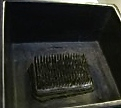







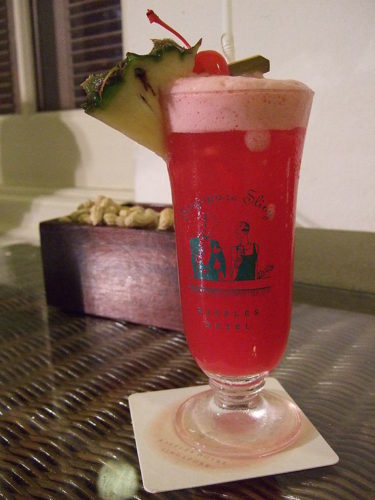





 Once done with carving the design, remove the paper and tape, draw the frame, and finish the carving.
Once done with carving the design, remove the paper and tape, draw the frame, and finish the carving.







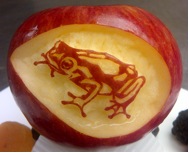


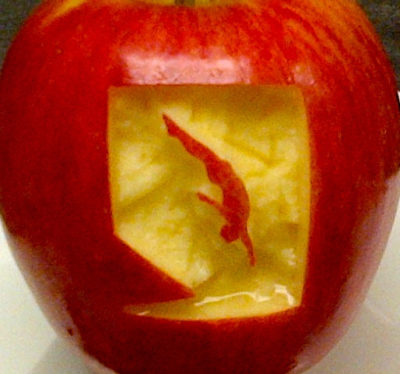





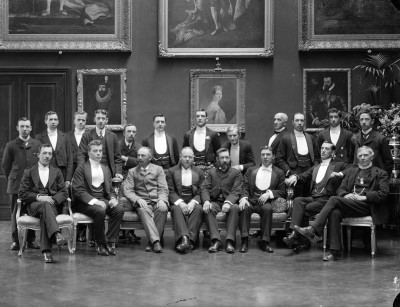
 It starts when Raj attends a blind date set up by his parents with Penny, who is keen to practice her mixology skills so that she can perform more professionally during her barkeeper shifts. After preparing a Tequila Sunrise for Leonard, a mutual colleague, Penny asks Raj what he would like. Since he finds it uncomfortable to talk to her, he whispers in Leonard’s ear to tell her he would like whatever she suggests; to which she replies, “What about a grasshopper? I make a mean grasshopper.” And so ends the episode.
It starts when Raj attends a blind date set up by his parents with Penny, who is keen to practice her mixology skills so that she can perform more professionally during her barkeeper shifts. After preparing a Tequila Sunrise for Leonard, a mutual colleague, Penny asks Raj what he would like. Since he finds it uncomfortable to talk to her, he whispers in Leonard’s ear to tell her he would like whatever she suggests; to which she replies, “What about a grasshopper? I make a mean grasshopper.” And so ends the episode.

